Anousha Payne’s ‘Murmurations’ Breathes New Life Into a 500-Year-Old Turkish Bathhouse
By Keshav AnandSet within the vaulted, echoing chambers of a 13th-century Byzantine cistern beneath Zeyrek Çinili Hamam, Murmurations marks the first in a new series of exhibitions hosted at this historic site in Istanbul. London-based artist Anousha Payne, whose hybrid sculptural forms weave together myth and memory, presents a body of work shaped by her study of the bathhouse’s history and architecture. Curated by Anlam de Coster, the exhibition brings together ceramics, hammered metal, painting, and sound to explore the idea of the hammam not only as a site of ritual cleansing but as a vessel of layered histories and spectral presence. Payne’s practice, rooted in storytelling, finds a resonant echo in the textured walls and watery past of this ancient space. To learn more about the artist’s time in Istanbul, Something Curated’s Keshav Anand spoke with Payne.
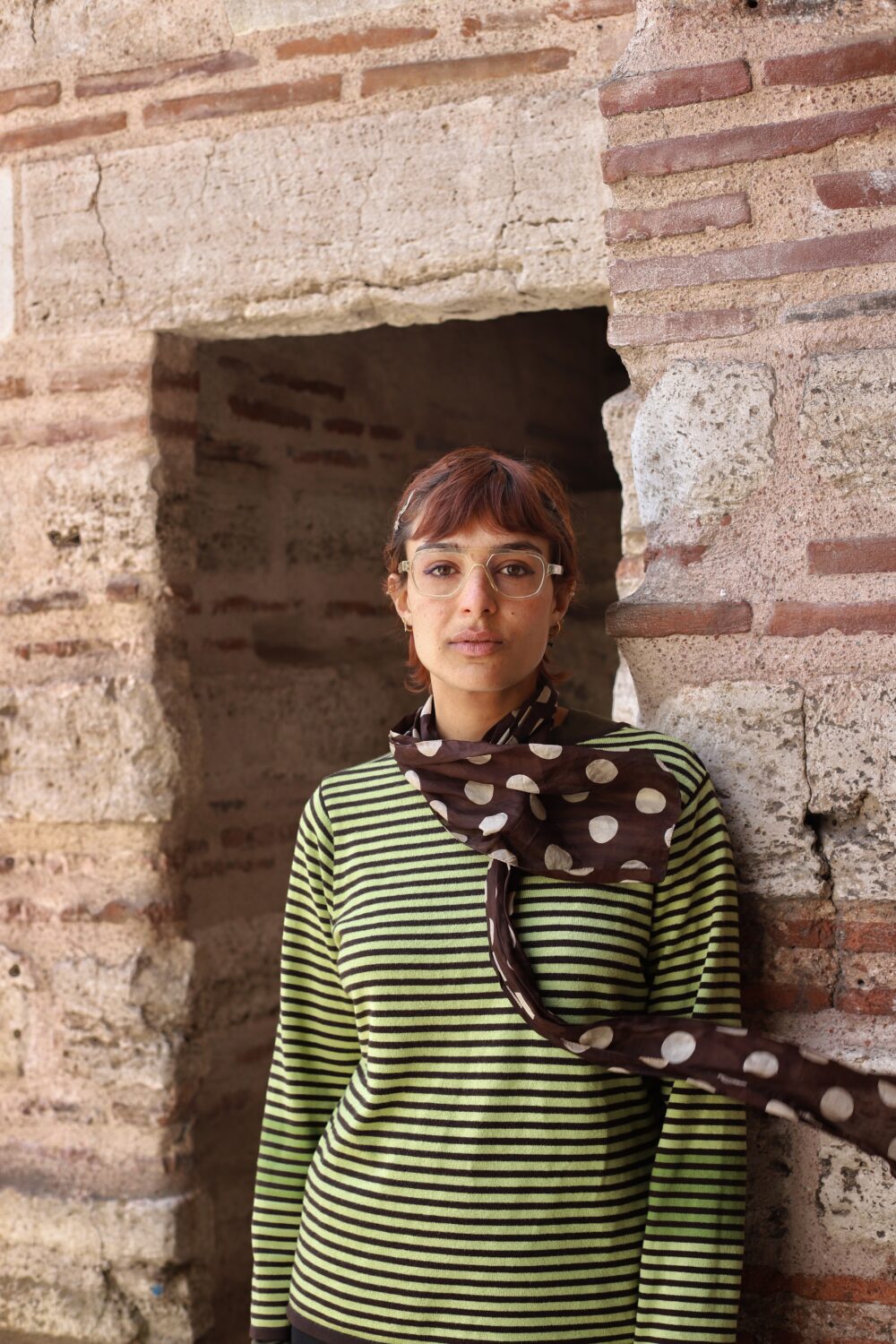
Keshav Anand: Murmurations mines the layered histories of the Byzantine cistern at Zeyrek Çinili Hamam. I’m curious, what was your first impression of the space?
Anousha Payne: My first experience of the space was overwhelming. It is a building so rich with history, with marks of previous dwellers, both humans and the body of water that occupied the cistern – there is much to absorb. It is a space that requires time to read and experience. I felt most excited by it when I returned alone, to allow it to sink in, to see the walls properly, to test how the space holds a voice, how sound moves through the tunnels. To see how alive the cistern is – like a living being, an entity, and a vessel, somehow female.
In consideration of the layered histories of the building – I have tried to reiterate this in my material response. I have also been thinking about Istanbul as such a layered city with many histories, and seeing the material and cultural layers as not to be erased but to be built on top of, alongside and within. I have tried to repeat this process materially within the paintings as well as ceramics – to create images and build, paint, and glaze over them, working with the previous image to create a new character, a kind of material translation of the walls. The same kind of layering has been applied to the creation of the sound piece – various voices and sounds will work with each other to guide us through the space.
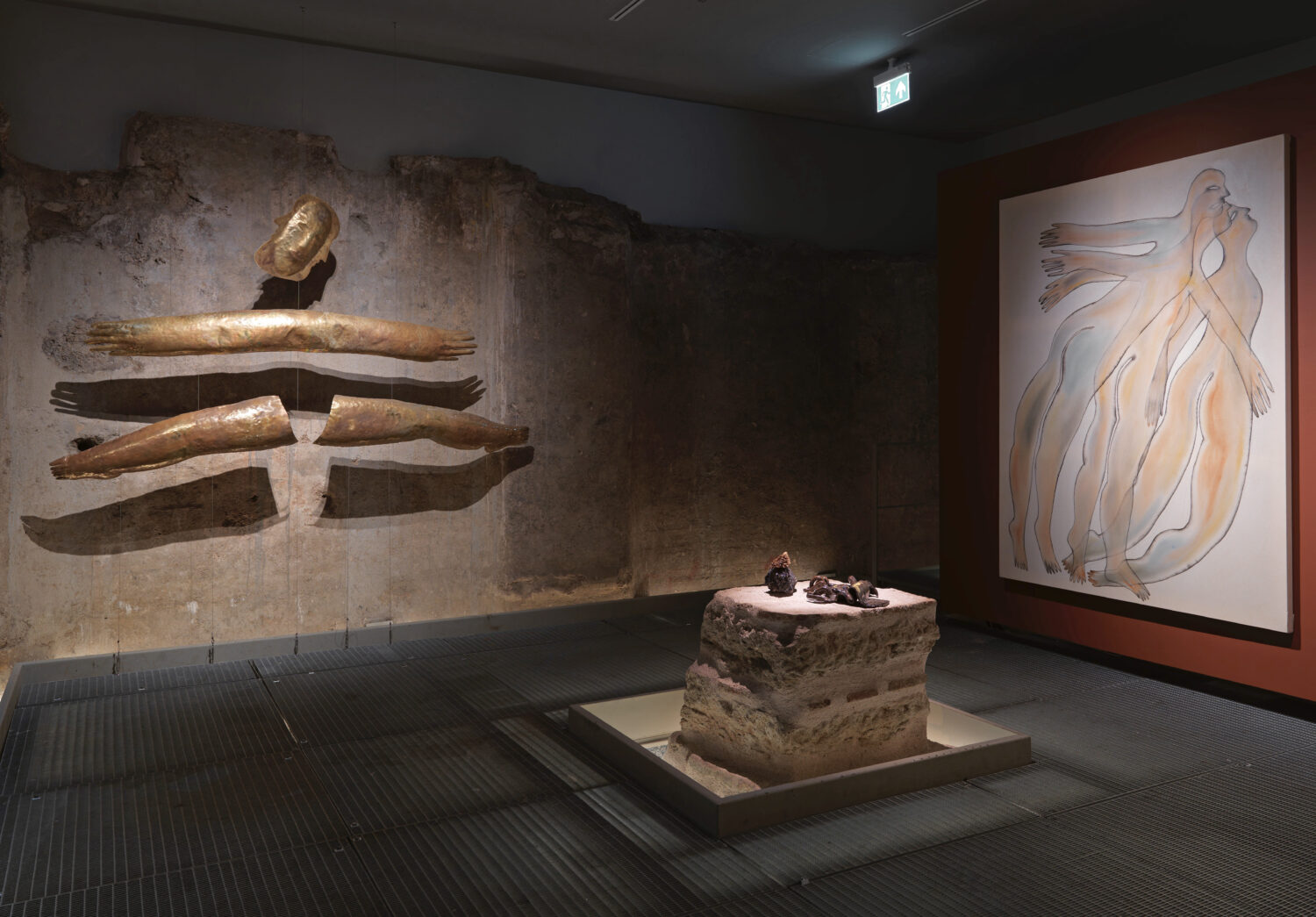
KA: How have the multiple meanings of “murmurations,” from the collective movement of birds to quiet repetitions of sound, influenced this new body of work?
AP: I arrived at the exhibition title Murmurations about halfway through production for the show. I was first thinking about murmurations of starlings, but then began considering other natural shapes and patterns that we project our own images and experiences onto – cloud formations and puddles of water on the street. The word has a poetic resonance with the idea of how differently someone may read the walls of the cistern based on how they perceive things, their previous experiences and identity shaping this. The exhibition is about reading these markings on the walls and creating a kind of fictional archaeology around the characters. I was also interested in the idea of a murmur – a quiet repetition being used in the show somehow, the idea of subtly repeating the imagined figures on the walls.
The process has been part imagined and part recording; I began each by taking tracings of marks on the walls that have been made by water, the excavation, the activities that have passed through the cistern – to take in the histories, the people and materials that have moved through the space. From these tracings, I have built some of the characters; there are some marks that can be read as figurative. I am building fictional characters around this – a murmur of the tracings on the wall. Within the characters themselves there are murmurs or repetitions of each other, one is built from another; they are all related. I have also worked with some characters that I often return to within my work, fictional and influenced by folktales, whose forms reference returning autonomy to women who have lost their power or voice within the tales they originate in.
Alongside this process, I have been working these ideas into a sound piece with Suren Seneviratne. The starting point for the sounds are a reflection of the acoustics of a functioning hammam, thinking about the clanging of a metal hammam bowl and women’s voices becoming a discordant chorus as they echo around the room. The sounds will be a reflection on this, using layered instrumental and archival sounds, alongside recordings of myself, my sister, and my mother as voices for the characters in the show – here I am thinking about the hammam becoming a place away from the domestic for women to commune – and female systems of care and support.
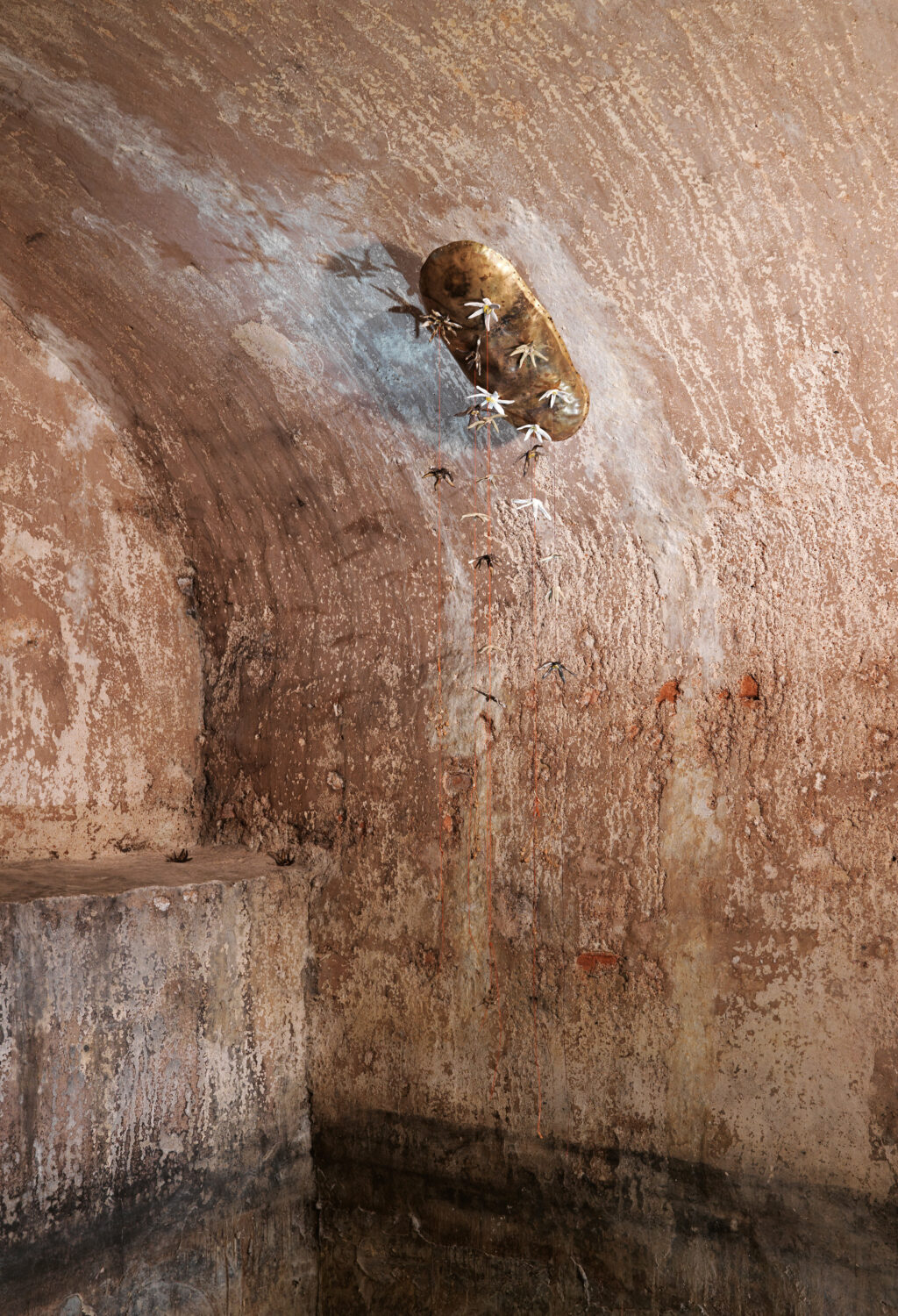
KA: As you mentioned, the notion of “reading” the marks on the cistern’s walls suggests an archaeological impulse. How do you see your work in dialogue with this field?
AP: My first interaction with the cistern was a tour by Nedim, one of the archaeologists working in the museum team; there is so much to learn from the material history, the many transformations the space has experienced passing through different hands, and the archaeological research that has been undertaken there allows us to get closer to this. There is a very rich history, and some well preserved (11-13th century) ship graffiti in the space – it is impossible to ignore the presence of the archaeological discoveries found within as well as on the walls of the cistern. It made sense to me to approach the exhibition in a similar way – to take a poetic archaeological reading of the space – finding or building one part of an image or fictional character, and imagining the rest that we cannot know for certain, creating a story – an idea of a history, around a fragment.
Although I did not directly respond to any of the graffiti itself, I have taken the idea of a light-giving symbol being brought to the space from a potential reading of one graffiti as a sundial, or some kind of sun symbol (it is currently unknown). I have brought the idea of a light-giving creature into the space, whose face markings have been taken from a tracing of the wall – mother of pearl pieces (which were deadstock) become like spotlights – the characters that are depicted nearby are imagined to be swimming towards a source of light. The use of dots to create the markings that emanate a sense of light is a reference to how light enters the hammam through the elephant eye windows – creating dots as streams of light. I also want to consider the material identity of the less studied parts of the cistern – the incidental marks and shapes on the walls, to consider it as an entity itself, as well as a vessel or home for these characters, to materially read a space rather than to build a factual narrative.
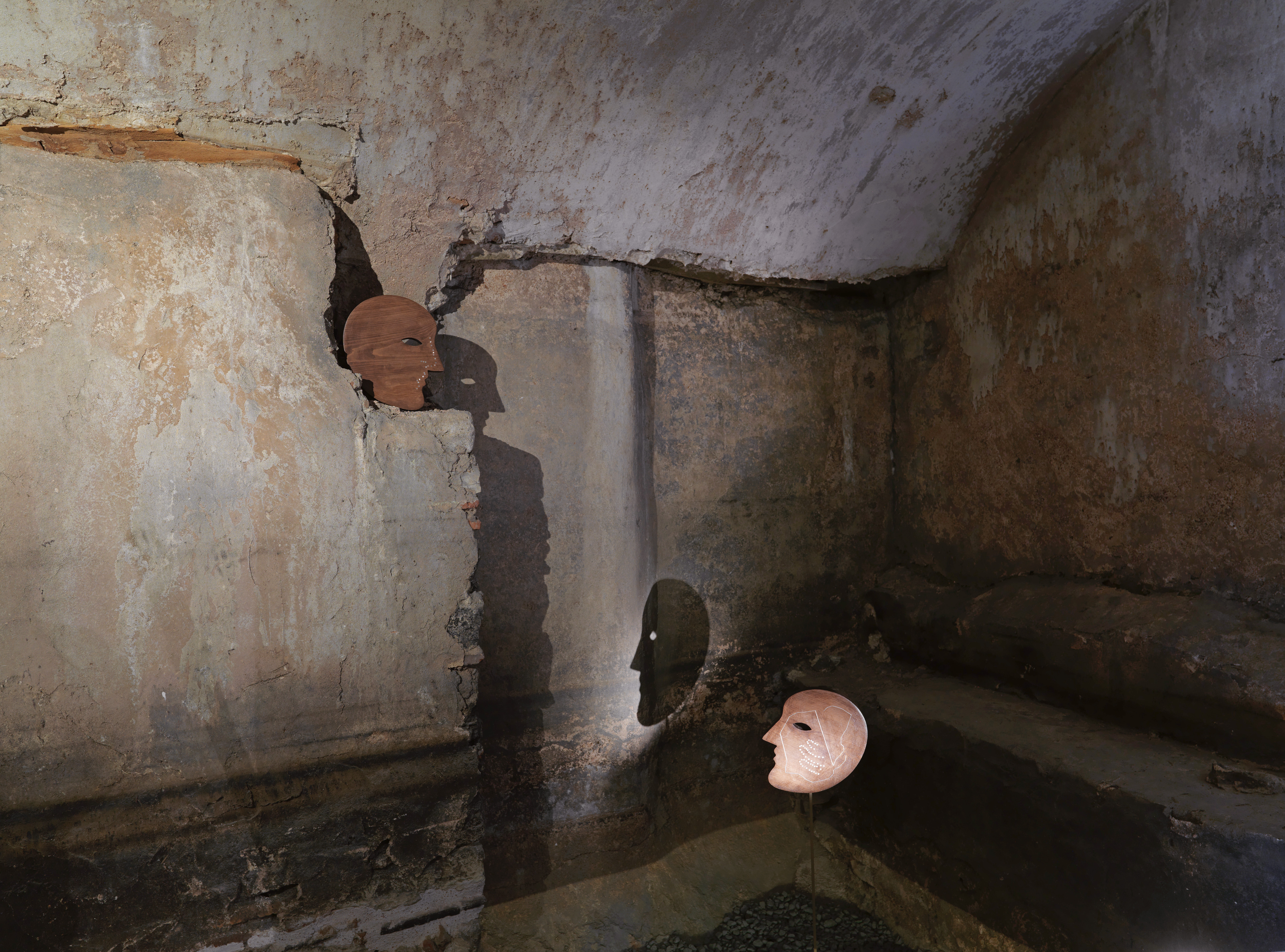
KA: Water is a central element in both the history of the cistern and your imagined inhabitants of the space. How does water as a material and metaphor play a role in your work?
AP: Water plays a role within the way I work with paint – within my paintings it creates the space for the pigments and watercolours to move. The figures within the show are depicted swimming or floating within the water – peaceful underwater beings, a group of women dwelling within the walls, communing and caring for each other; a representation of the women who have passed through the hammam. Water is life-giving, it is what has been held within the space and what has shaped the walls, it has created these characters as much as I have. As a metaphor, it is present here as a representation of a transformation or renewal; I am imagining the cistern as a transformative and transportive place here, we enter the world of the cistern which was defined by its history with water. There is one figure at the end of the show that will hold small amounts of water in its eyes, a guardian of the space.
KA: Thinking about your practice more broadly, you very often smudge the lines between human, animal, and inanimate forms. I wonder if you could expand on your interest in this sort of hybridity?
AP: I am interested in hybrid creatures as a way of emphasising a need for empathy and care between the human and the non-human. I began first looking at folktales a few years ago, and found many characters were depicted as having the ability to shape shift and transform; often within these folktales are messages for morality within ecology and community – to care more, to care for each other. By producing shapeshifting or hybrid forms I am trying to get closer to the idea that we share our lives and livelihoods, we exist together in more ways than one – imagining ourselves becoming a creature or a plant allows for a shift in perspective, what is it like to share the perspective of a breathing, non-human being?
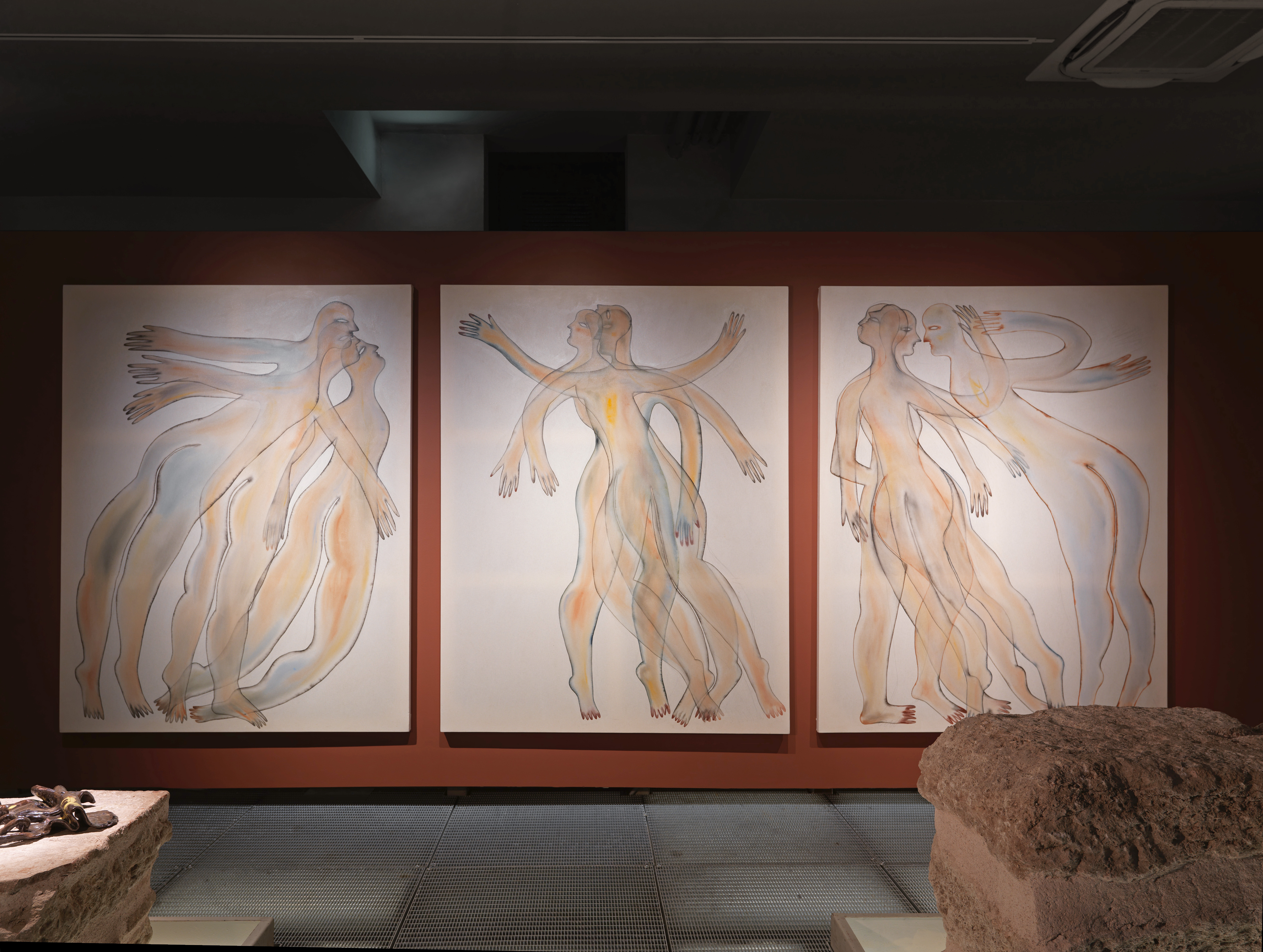
KA: Changing pace for a moment, I would love to get some of your Istanbul recommendations. Where have you enjoyed eating during your time in the city?
AP: My Istanbul recommendations are: to get boza at Vefa Bozacısı – maybe this is a well known place but the fermented wheat drink is very interesting and the walls are beautiful. I also loved having a fermented beetroot juice with arak at Kevok Ocakbașı. I love the buttery pilau rice with white beans at any of the street stalls or restaurants. I like the atmosphere at Asmalı Cavit. Baklava in the most unassuming shops that only serve baklava to take away seem to be best, but I am yet to have bad baklava.
My favourite museum is the Kariye Mosque, a converted 6th century AD church with beautiful mosaic Ceilings. I love the beautiful structure of Suleymaniye mosque and the view over the city from here. And of course having a bath at Zeyrek Çinili Hamam is extremely peaceful, and I would return for the wall paintings alone.
KA: And what are you currently reading and/or listening to?
AP: I have been reading some contemporary Turkish writers I discovered whilst here – my favourite is The Stone Building and Other Places by Asli Erdoğan. She describes a different kind of haunting of the walls to those that I have depicted here, however they are evermore relevant for current times. Also some essays by Ursula K. Le Guin from Space Crone, specifically an essay/speech about the mother tongue: “This is a wedding and welding back together of the alienated consciousness that I’ve been calling the father tongue and the undifferentiated engagement that I’ve been calling the mother tongue.”
I have also been reading the poems and text pieces that will be in the next FU Review, an independent Berlin-based yearly poetry publication which I have contributed to (as a visual artist rather than writer) for the next issue. This is how I discovered the work of Kitty Doherty, the editor of the FU Review, a concrete poet who has written some incredible text based works about/in response to the research and works for this show, who has been inspiring to read and work with.
I have been listening to a lot of Brian Eno, calm, present but not distracting. This last week I have rediscovered ANOHNI and the Johnsons, listening to Sliver of Ice. I have been listening to a lot of music and sounds by Suren Seneviratne who’s working on the sound piece for the exhibition.
Anousha Payne: Murmurations is on view until 15 August 2025 at Zeyrek Çinili Hamam, Istanbul.
Feature image: Installation view from Anousha Payne: Murmurations. Photo: Hadiye Cangökçe. Courtesy of Anousha Payne and Zeyrek Çinili Hamam